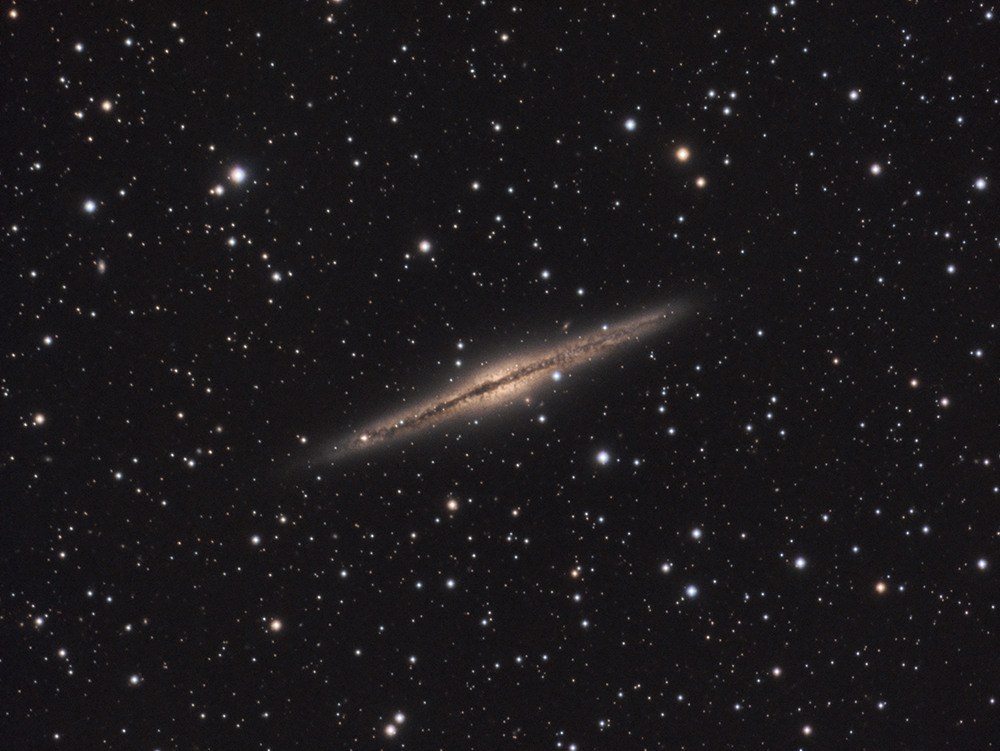NGC 891 is an edge-on spiral galaxy some 27 million light years away from Earth in the constellation of Andromeda. The galaxy was discovered by William Herschel on 6th October 1784. It is the dominant member of the NGC 1023 group of galaxies, which includes NGC 1023, NGC 925, NGC 1058, NGC 1239 and many other smaller dwarf galaxies. NGC 891 has the alternative name of the 'Silver Sliver Galaxy'.
It is thought that the Milky Way seen edge on would look very similar to NGC 891, as the two galaxies are thought to be of fairly similar size and luminosity. One difference between the Milky Way and NGC 891 is that NGC 891 contains large amounts of dust which accumulates on small planets similar to Earth. However, the main difference between the Milky Way and NGC 891 is the significantly different vertical variations of stellar metallicity.
There is debate as to whether NGC 891 is a barred or unbarred spiral galaxy. The reason being that our view is edge on, making it is almost impossible to see the region where a bar may or may not be. There are many sources claiming it has a bar, based on studies of the dynamics of its molecular hydrogen, while many say that it is unbarred.
NGC 891 is peculiar for the filamentary patterns extending out from the galactic disk towards the galactic halo. This phenomenon is thought to be caused either by supernova explosions flinging dust out of the galaxy or by light pressure from surrounding stars. Whatever the reason, I am delighted to have resolved them in this image from my garden. I also particularly like the evident central bulge.
On August 21st 1986 supernova SN 1986J was discovered in NGC 891 with an apparent magnitude of 14. It was one of the most radio luminous supernovae ever discovered, so not surprisingly it was observed first in radio and then afterwards in the optical.
The beautiful and interesting nature of NGC 891 has led to it being selected as the first light target of telescopes at two professional observatories; the Large Binocular Telescope at the Mount Graham International Observatory and the Discovery Channel Telescope at the Lowell Observatory. NGC 891 also features in two pieces of music; the first is in the soundtrack to the 1974 film 'Dark Star' as the track 'When Twilight Falls on NGC 891' and the second is the simply titled track 'NGC 891' on the 1974 album 'Aqua', the debut solo album from Tangerine Dream frontman, Edgar Froese. |


